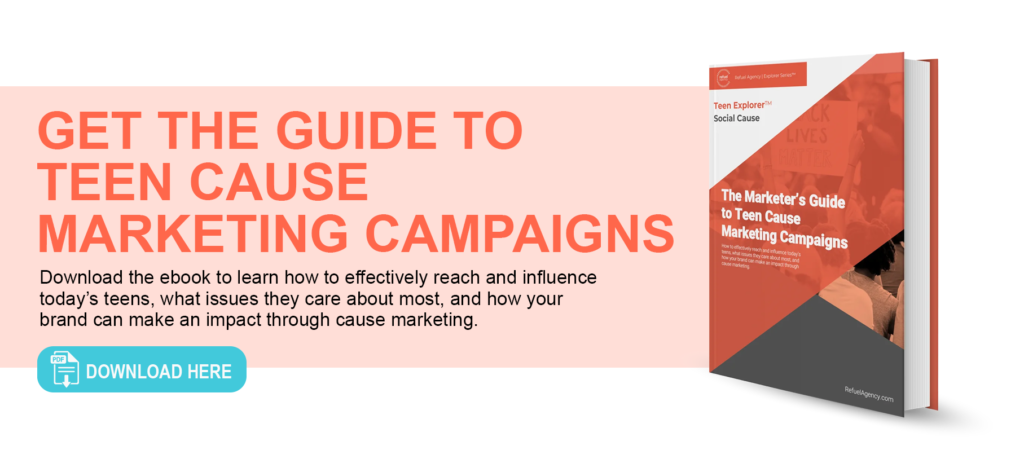At Refuel Agency, we’ve been advertising to teens and college students for over 30 years using a combination of data-driven omnichannel solutions and proprietary research. One thing we’ve learned, when you’re advertising to youth, remember two of the most influential people in their lives: their parents.
Teens living at home still have enormous influence over their parents’ spending decisions, boosting overall teen buying power from $95.7B to $265.6B. That’s a huge difference. So from the experience of the experts, here’s how to advertise to parents: the right way.
At Refuel Agency, we’ve invested the time and the research to understand teens—and their parents. Brands and agencies alike come to us to execute targeted, effective, and strategic campaigns to reach their target audiences. You can learn more about our capabilities here.

1. Focus on the future
When it comes to marketing to parents of high school students, one key difference is that while high school students are largely focused on the present, parents are more concerned with their kids’ futures. What does that mean, exactly?
Parents of high school students are hyper-focused on what their kids are going to do with their lives. They want to keep their kids out of situations that could be harmful, and they want to steer their kids towards paths that will lead to success.
And the pandemic has only amplified this reality. In a post-COVID world, brands can succeed with parents by communicating messages of safety about the future. By promoting messages that will improve the lives of teens, brands earn parents’ trust over time and become loyal to those brands.
Read next: Marketing to High School Students: 4 Strategies That Make An Impact
2. Advertise where their kids are—and they are, too
We know that out-of-home advertising is highly effective for kids and teens. But it’s also effective for parents, who are in and out of their kids’ schools all the time. From picking their kids up, volunteering, or attending events at schools, parents are heavily involved with their kids’ lives and are influenced by the out-of-home advertising they see every day in their childrens’ school buildings.
In-school advertising influences parents during their daily routines, in a highly-trusted and familiar environment. In-school advertisements also have the ability to spark conversation between both fellow parents, as well as parents and their children.
Read next: 10 Tips for Back-to-School Advertising Campaigns That Get Results
3. Make the most of generational differences
Parents consume media in a very different way than their children and are 50% more likely than their teens to use email. Use this to your advantage!
We’ve seen great success reaching parents through email campaigns with social extension. First, we launch an email campaign to your target audience of parents. But what makes these campaigns truly effective is the 2-3 week social extension campaigns we run after every email deployment.
The prospect’s email will be targeted on Facebook and Instagram, which helps to drive impressions for those who didn’t open the email and repeat impressions for those that did. Email campaigns are a high-funnel advertising touch, and social extension campaigns drive prospects further down the funnel to prompt action.
4. Embrace diversity
Today’s parents are parents to the most diverse generation in history. The majority of Gen Z teens are non-white (52% according to Refuel’s Gen Z Explorer Series™), compared to 29% non-white members of the Baby Boomer generation. This is a generation that, as Jason Dorsey explains in his TedX talk, “are so diverse that they don’t see diversity… unless it’s absent.”
If your brand is wanting to effectively advertise to parents, diversity in your advertising is a must. Parents want to feel confident that your brand is good for their family and for their kids, and celebrating diversity shows that you are invested in representing who they are and what’s important to them.
Read next: 6 Examples of Brand Who Got Multicultural Marketing Right
5. Stand up for something—and mean it
Cause issues and cause marketing have gained more awareness in recent years, but 2020 accelerated an already-increasing trend towards cause marketing. Brands can no longer stay silent about the causes they support, and that’s because consumers expect brands to stand up for what they believe in.
This year, we wanted to better understand parents’ relationship to cause marketing—what issues they care about the most, how they communicate about causes, and what role they expect brands to play.
And the results we found were clear: parents care about causes, and supporting causes will help your brand win parents’ support and brand loyalty. We found that K-12 parents care the most about education, and they are more likely than other parents to care about children’s causes. Meanwhile, parents of college students care the most about COVID-19 and mental health.
Overall, supporting causes make an impact. Parents want to know that your brand cares about its community and its customers—and has their children’s best interests in mind. The best way to do that is to authentically support a cause that aligns with your company’s mission statement and values.
Parents are a crucial consumer segment for your brand—and we can help you reach them. Are you ready to create an advertising campaign for parents that will stand out and make an impact? Contact us today to receive your custom media and marketing plan.




